This post may contain affiliate links. Please read our disclosure policy.
This gluten free bread flour works best to make bread dough that behaves the most like you remember. Make shaped breads with a taste you’ll love.
I started a revolution of gluten free yeast bread when I published Gluten Free on a Shoestring Bakes Bread in 2013. This is the gluten free flour blend at the center of it all!
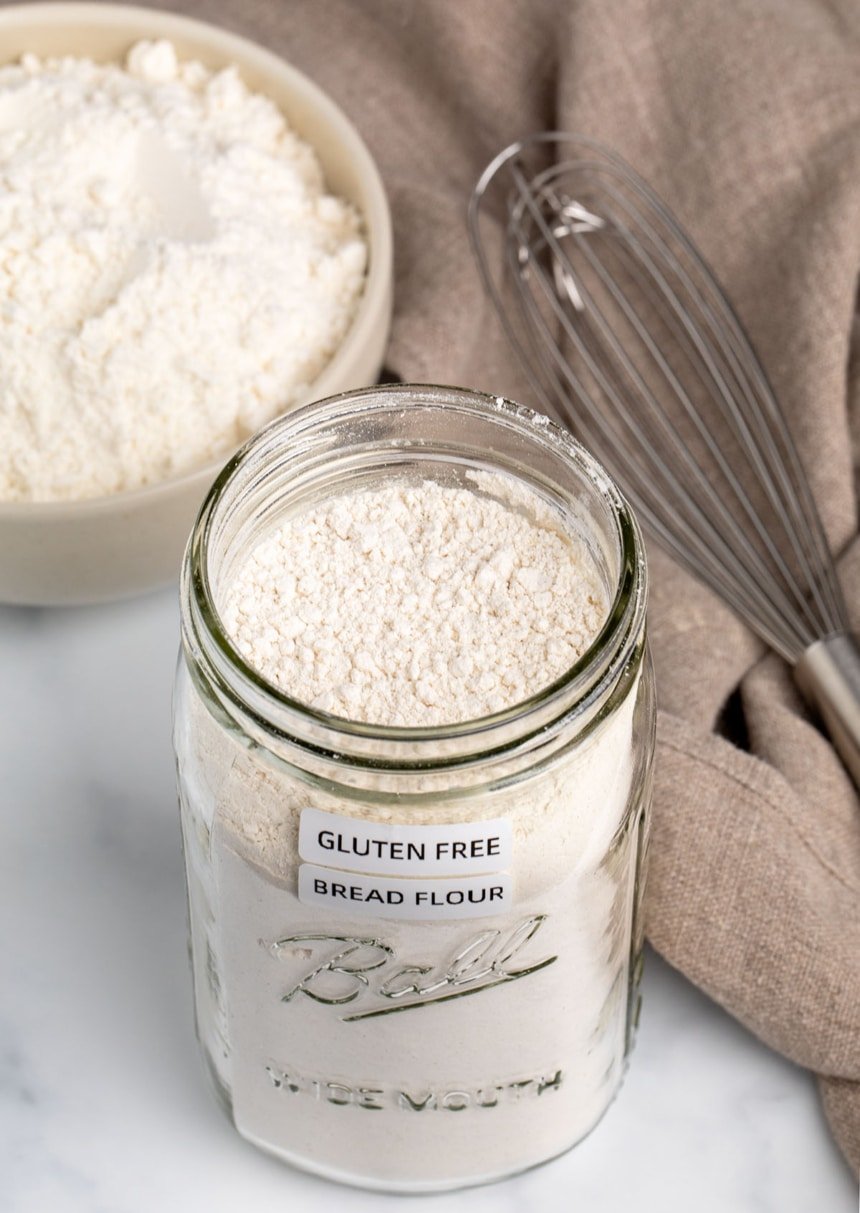
my take
Nicole's Recipe Notes
My gluten free bread flour, first introduced in my bread cookbook, GFOAS Bakes Bread, in 2013, is made by combining 3 ingredients: whey protein isolate, modified tapioca starch, and a high quality all purpose gluten free flour like Better Batter's original gluten free blend. Together, they will open up the universe of what is possible with gluten free yeast bread.
Baking recipes that call for this gluten free bread flour is an experience much more like what you might expect when you're baking conventional yeast bread. The dough isn't overly wet like the batter-style of bread.
The breads you'll make with this gluten free bread flour appear different when raw, and taste different when baked. They have more internal structure and don't need to rely on eggs for additional structure like most gluten free breads.
Breads made with this blend using recipes that are developed for it often can handle 2 rises, like conventional wheat bread, one before and one after shaping. That means that the dough is easier to handle still, and there is even more flavor development in the yeast.
Recipe ingredients
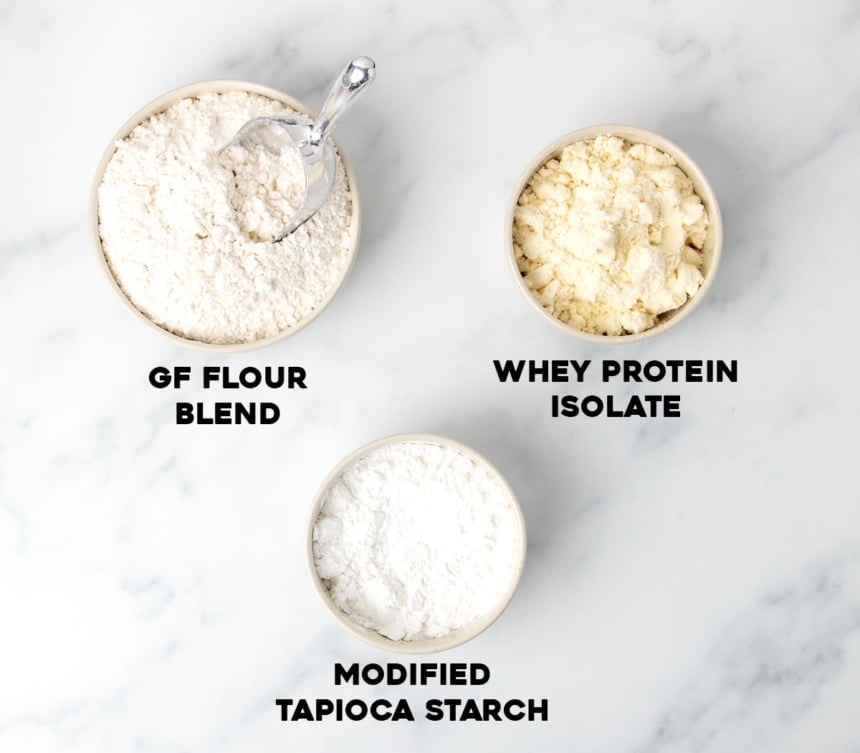
- All purpose gluten free flour blend: I developed this blend using Better Batter's classic blend as the base. It also works with Nicole's Best multipurpose gluten free flour blend. You can also always use my “mock” Better Batter gluten free flour, or this 4-ingredient blend that contains (to make 1 cup):
- 90 grams (about 9 tablespoons) superfine white rice flour (64%)
- 31 grams (about 3 1/2 tablespoons) potato starch (22%)
- 15 grams (about 5 teaspoons) tapioca starch (11%)
- 4 grams (about 2 teaspoons) xanthan gum (3%)
- Whey protein isolate: an unflavored protein powder that is nearly 100% protein. I like Opportuniteas brand, Isopure brand, and many others.
- Modified tapioca starch/Expandex: Expandex is a chemically modified tapioca starch that helps create amazing stretch and chew to gluten free breads. It is chemically (not genetically) modified, and is not the same as and cannot be replaced with regular tapioca starch/flour. There are many ways to buy it on Amazon.
- If you can't find Expandex in your country, you can use Ultratex 3 in its place, which seems to be about 3 times as strong. Use 1/3 as much Ultratex 3 as Expandex by weight, and increase the other ingredients by 5 grams each per cup.
How to make gluten free bread flour
To make 1 cup (140 grams) gluten free bread flour, you'll need a simple digital kitchen scale. Simply place a bowl on the scale and press the “tare” button to zero its weight. Add gluten free flour until the display reads 100 grams, then tare that weight. Add 25 grams of whey protein isolate, tare, and 15 grams Expandex modified tapioca starch. Whisk together well.
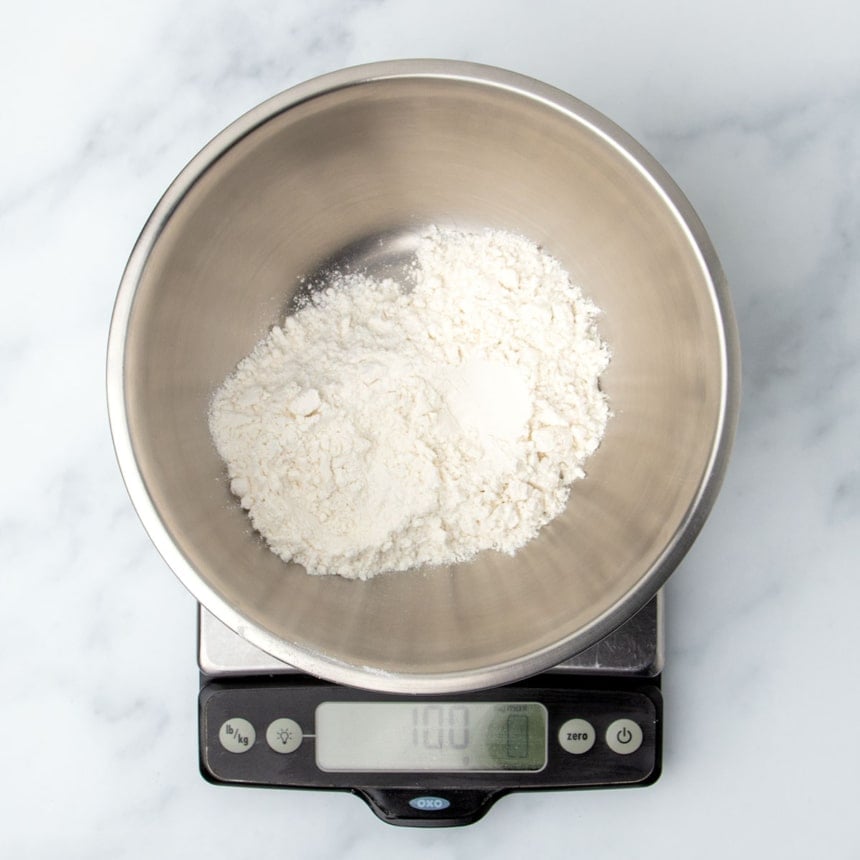
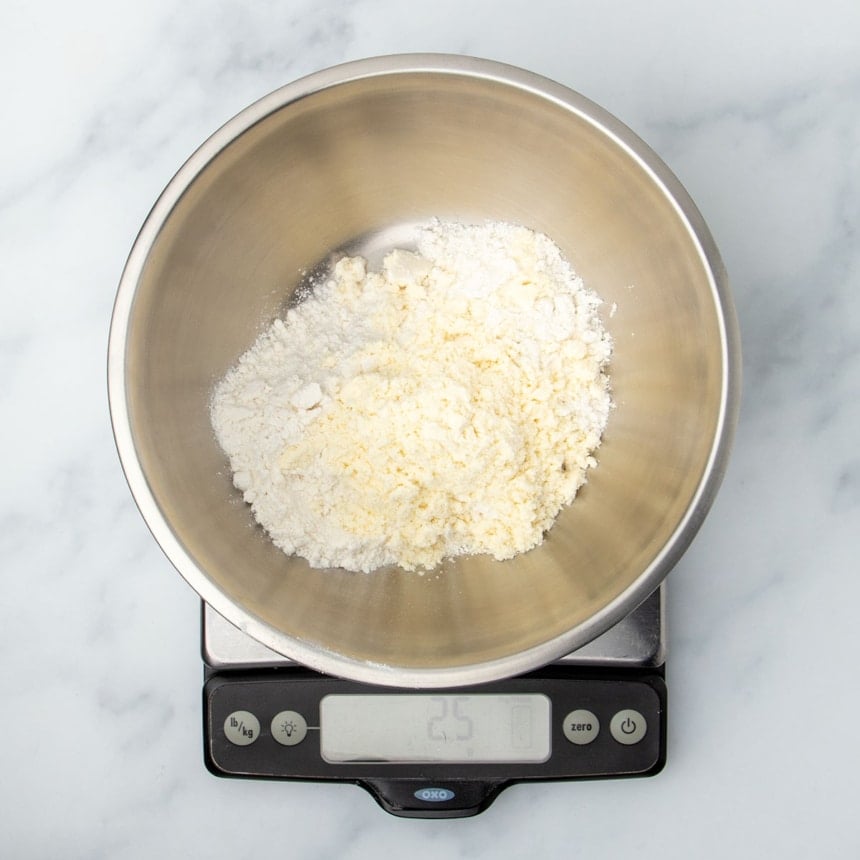
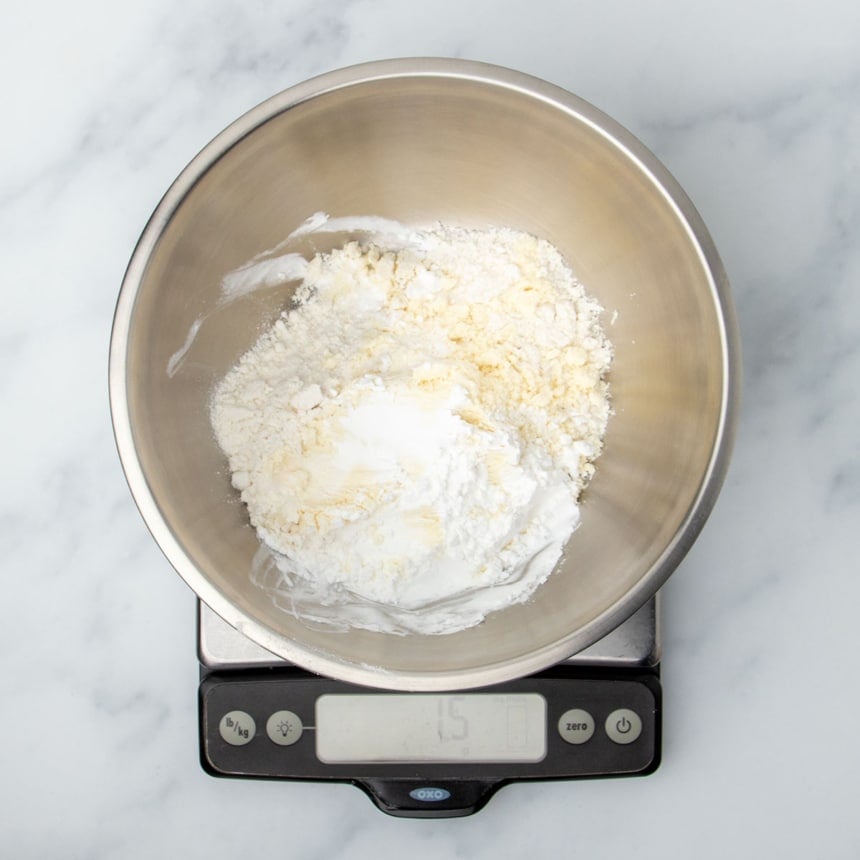
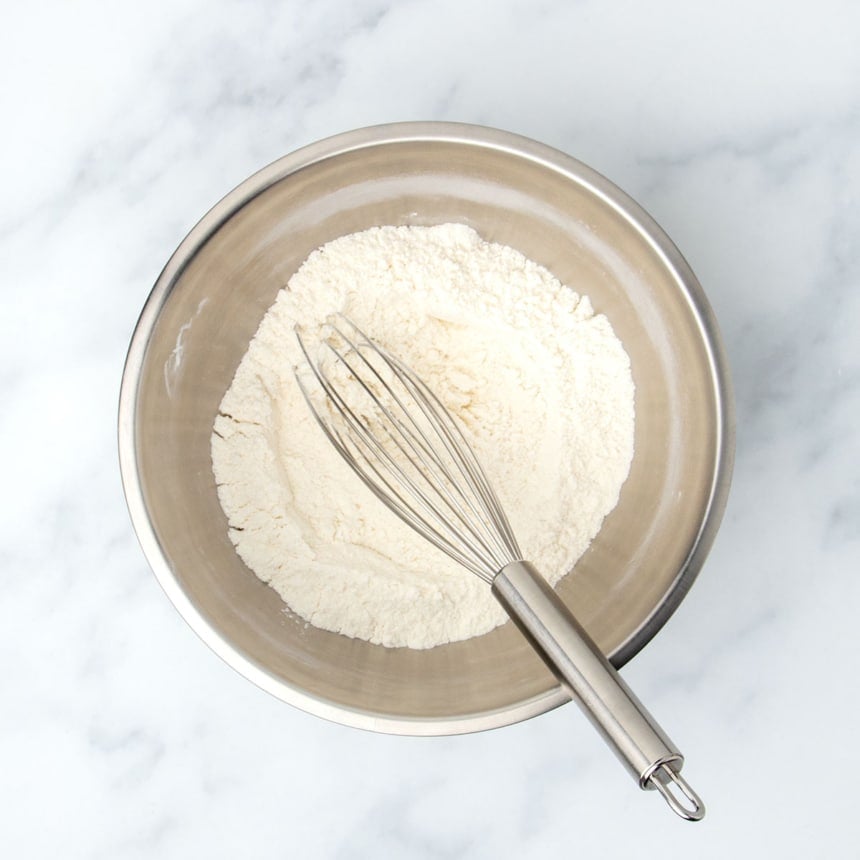
Ingredient substitutions
Dairy free
Whey protein isolate is the only protein powder that truly works to make my gluten free bread flour. I've had limited success with rice protein isolate and pea protein isolate in place of whey protein isolate, but you will need to add 50% more water to the bread recipe. That will create more of a batter-style gluten free bread recipe that just isn't as easy to shape. I think you're better off using our older style of gluten free bread recipe, like our gluten free bread recipe.
Potato-free
Better Batter uses two kinds of potato products: potato starch, and potato flour. There is no substitute for potato flour, but in place of potato starch, you can use arrowroot or cornstarch. Try using the 4-ingredient all purpose gluten free flour blend made from superfine white rice flour, potato starch, tapioca starch, and xanthan gum, and replace the potato starch with arrowroot or cornstarch.
Modified tapioca starch
You can use either Expandex and Ultratex 3 to make this blend, but you can't make it without some form of modified tapioca starch.
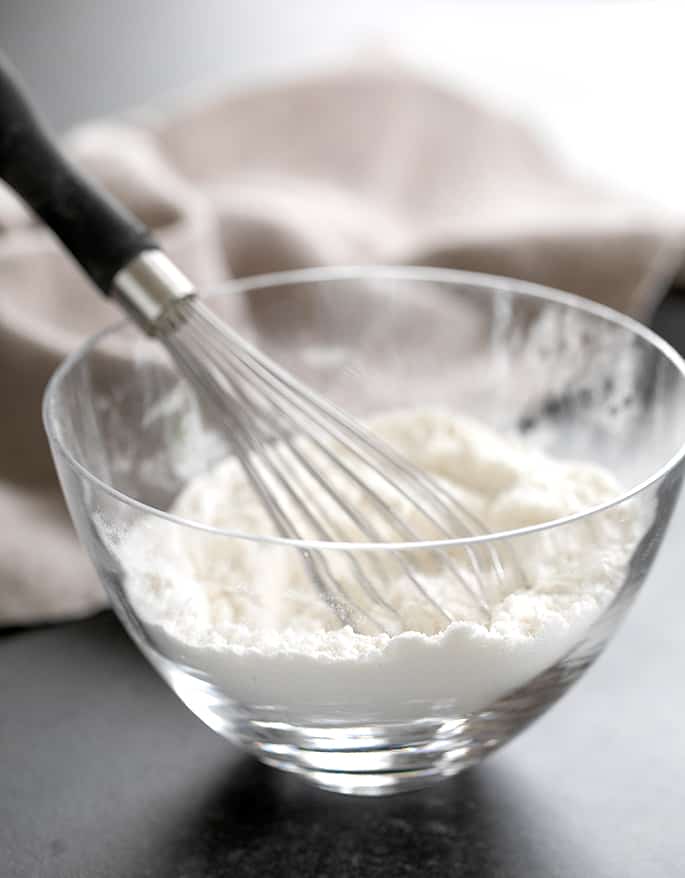
My Pro Tip
Expert tips
Measure by weight
For consistent results in baking, use a simple digital kitchen scale. I have a more expensive one from OXO with a pull-out screen, but Escali makes a great digital kitchen scale that costs about $25. Dry volume measurement containers like cups are not standard in size, and it's not possible to avoid human error. When you're dealing with small amounts of different dry ingredients, a scale is the way to go.
Use the right whey protein
Whey protein isolate is not the same as whey protein concentrate, which has more fillers and less protein. Each 28 grams (1 ounce) of whey protein isolate should have about 25 grams of protein. Look at the nutrition label and make sure it's about 89% protein (25/28 = 89%).
Use the right recipes
My gluten free bread flour blend only works in gluten free recipes that were specifically designed for it, like our gluten free crescent rolls. If you try to use this blend in our classic gluten free bread recipe, which calls for an all purpose gluten free flour blend, it won't turn out well.
Packaged gluten free bread flour
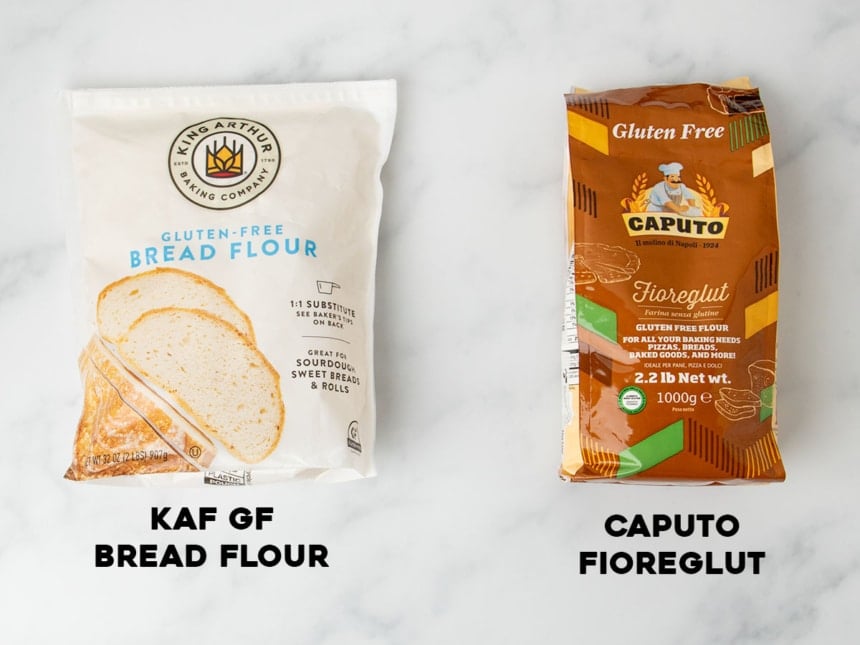
There are two packaged gluten free flour blends that I have found work in my gluten free bread flour recipes. They both contain gluten free wheat starch, though, so they are not appropriate if you're allergic to wheat. They are:
- King Arthur Flour Gluten Free Bread Flour: Contains gluten free wheat starch, corn starch, cellulose and psyllium fiber blend, sorghum flour, pea protein, xanthan gum, and enzymes. It behaves most similarly to my bread flour blend.
- Caputo Fioreglut: Contains gluten free wheat starch, dextrose, maize starch, buckwheat flour, rice starch, psyllium seed fibre, guar, flavoring. It absorbs more moisture than my gluten free bread flour, and does not brown very well since it's so high in starch. You might try increasing the liquid in the recipe by 10% to compensate.
Breads to make with this flour
Here are gluten free bread flour recipes. Two of them are reprinted recipes from GFOAS Bakes Bread. The rest I created after the book was already published, to share here on the blog.
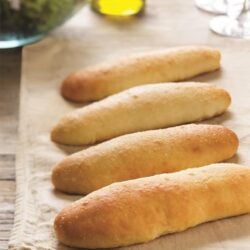
Soft Gluten Free Breadsticks
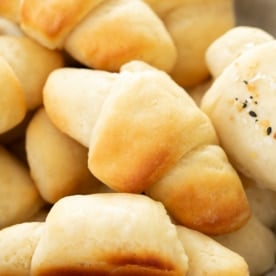
Gluten Free Crescent Rolls
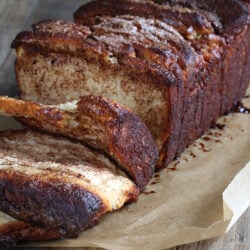
Gluten Free Pull Apart Bread
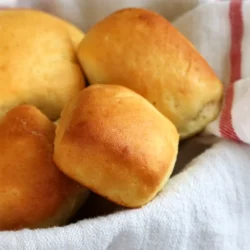
Gluten Free Texas Roadhouse Rolls
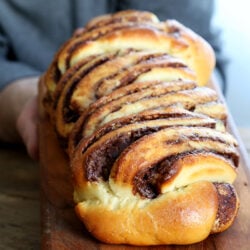
Gluten Free Braided Nutella Bread
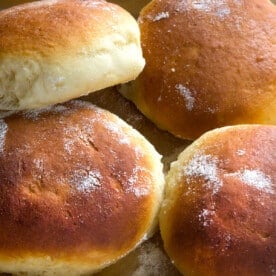
Gluten Free Hawaiian Rolls
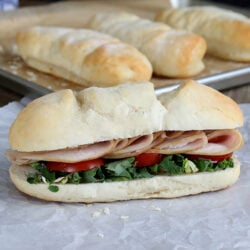
Gluten Free Subway Rolls
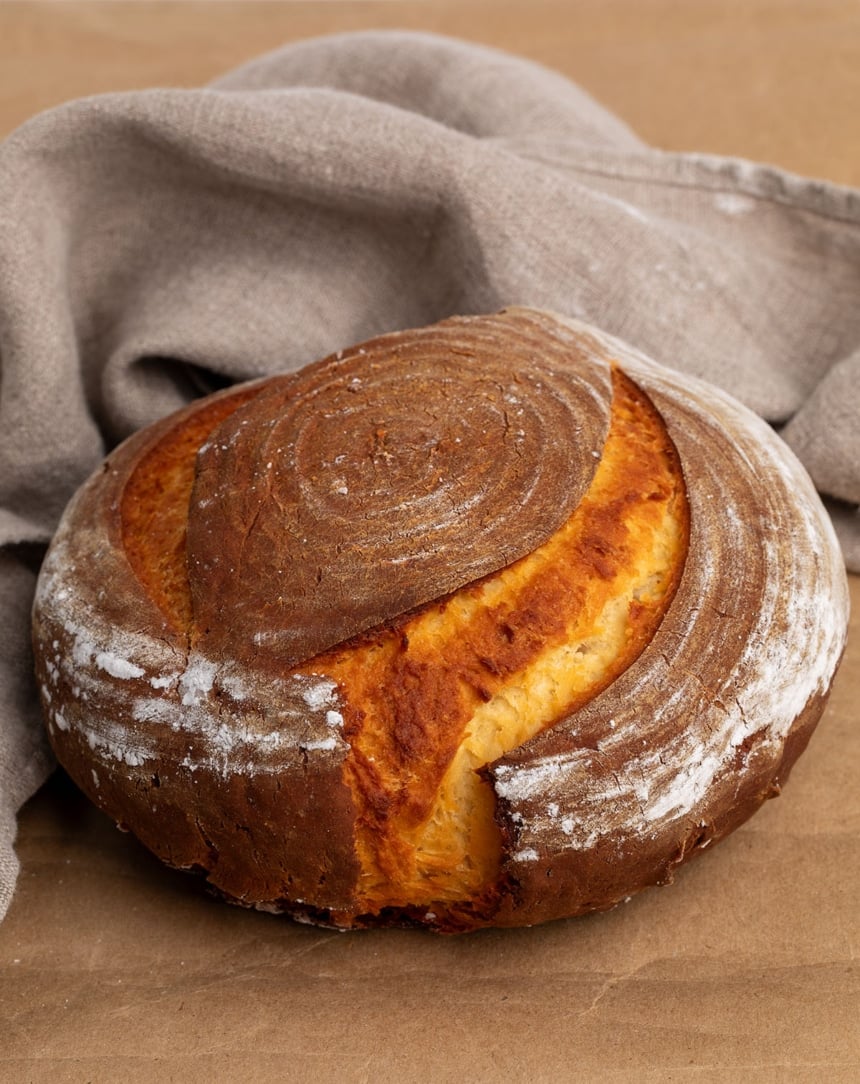
Gluten Free Bread Flour Recipe

Equipment
Ingredients
For bread flour with Expandex
- 100 grams all purpose gluten free flour blend, (71% of total) (See Recipe Notes)
- 25 grams unflavored whey protein isolate, (18% of total)
- 15 grams Expandex modified tapioca starch, (11% of total)
For bread flour with Ultratex 3
- 105 grams all purpose gluten free flour blend , (75% of total) (See Recipe Notes)
- 30 grams unflavored whey protein isolate, (21% of total)
- 5 grams Ultratex 3, (4% of total)
Instructions
How to use a kitchen scale.
- To make a gluten free flour blend of any kind, you will need a simple digital kitchen scale.
- Activate the scale by pressing the power button and allowing it to fully turn on.
- With nothing weighing it down, it will read “0”. You will be weighing in grams, which may not be the default unit of measurement. Switch to grams if necessary by pressing the appropriate button on your scale.
- Place a container large enough to hold however much flour you intend to create on the scale. Press “tare” again to zero out the weight of the container.
- Add your flour(s) one at a time to the bowl until the display reads the right number of grams of that flour. You may add the first ingredient somewhat carelessly since you can remove some flour if you add too much.
- Press the “tare” button to zero out the weight of that flour. Add the rest of the ingredients, pressing “tare” in between. Whisk and store.
To make bread flour
- If you are using Better Batter as purchased or you have already created my mock Better Batter blend using the method described above, your task is quite simple.
- Follow the instructions above to add the appropriate amount of Better Batter, tare, appropriate amount of whey protein isolate, tare, and the appropriate amount of Expandex or Ultratex 3.
- Place the blend in a container with a tight-fitting lid, whisk to combine well, and place in a well-sealed container in a dark, dry location.
- If you have to first create mock Better Batter or my Make It Simpler blend described above, first do that, making as many cups as you would like by multiplying every ingredient in the list by as many cups as you would like to create and store.
For multiples.
- To make multiple cups of bread flour, simply multiply each ingredient by the number of cups. Follow the method above, and store as directed.
Video
Notes
Nutrition
Nutrition information is automatically calculated, so should only be used as an approximation.
Make ahead/leftovers
Storage instructions
This flour blend will stay fresh for as long as its individual flour blends. Check the expiration dates on the components and take note of the nearest date as the “best by” date of your blend.
Store it in a sealed container in a cool, dark pantry, or in the refrigerator or freezer for longer storage. The whey protein will clump when cold, so be sure to let it come to room temperature before using it, and whisk it well to remove any clumps.
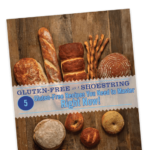
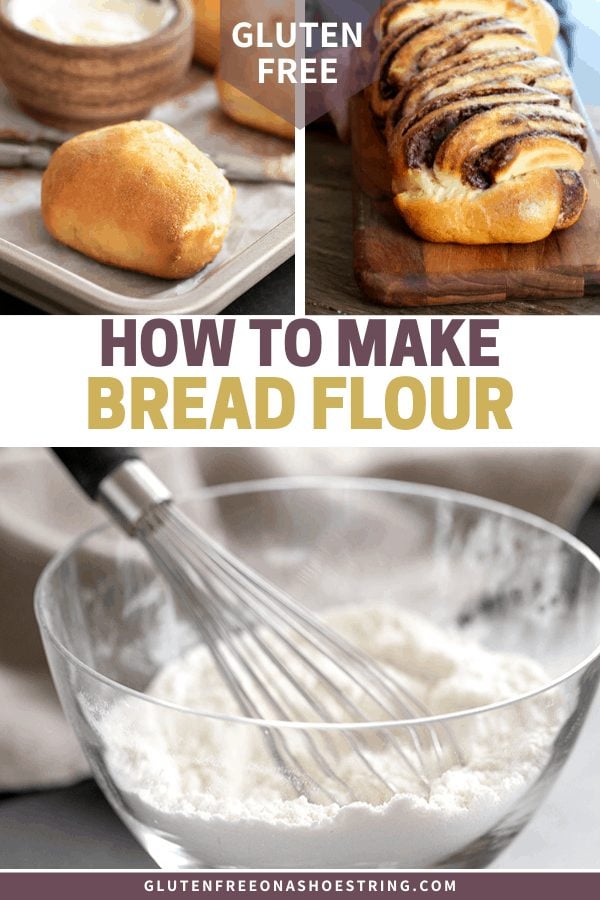
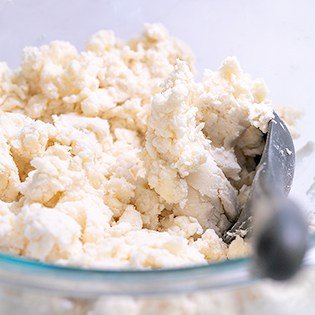

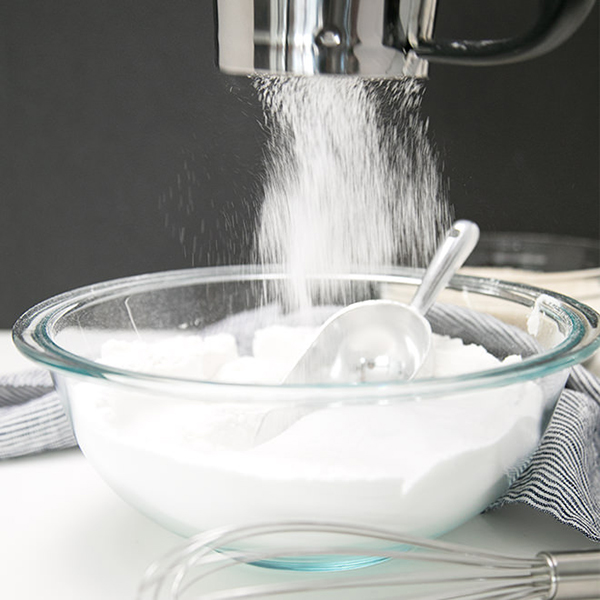









I just purchased the ingredients for the gluten-free bread flour blend using Better Batter. Are there certain bread recipes that work best with this flour blend? Thanks for all your helpful information.
Yes, Mary! There are many listed in this very post, under the heading “What breads can I make with this flour?”
Nicole,
I am getting ready to purchase the items needed to make your Mock Better Batter Flour, and am wondering where I can find the Pure Powdered Pectin. Is there a certain brand I should look for?
Thanks,
Debbie
Hi, Debbie,
You can find more information about the mock Better Batter (and the other blends) on the gluten free flour blends page. I buy Pomona brand pectin, and you toss the calcium packet!
Hello — Can I use Cup4Cup instead of Better Batter when making the all purpose GF bread flour?
No, I don’t recommend that. Only one of the two blends specified here, Lynn.
Hi Nicole,
Thanks for the great reciepes!
I got your first book about a week ago but only after buying 16kg of Doves Farm White Bread Flour here in the UK, but sadly I have no idea what the % of each flower/starch/zanthan gum might be. I have asked them but had no reply in over 2 weeks, so I guess that would be a NO.
Any thoughts please.
Hi, Gary, they won’t tell you the exact percentages of the ingredients in their blend. That would definitely be proprietary. I recommend you join my Gluten Free on a Shoestring Community group on Facebook (just answer the questions honestly and you’ll be admitted) for help using a UK blend like Dove’s. Or you could always build your own blend using my mock recipes.
Thanks for letting me know. I am going to make them today with your Simpler blend and see how that works out. My son and husband are still eating the other ones so they cant be that bad but better would be better lol Thanks
Ok….never mind my potato dilemma….I saw the post below mine and did a double take. Thanks so much. I will try again with that blend and see if they are not as dense. Any other suggestions? I did weigh the ingredients so there would not be the compacting issue with using a measuring cup. Much appreciated Nicole!
I’m afraid that Namaste will not work in my recipes. It’s just not a well-balanced blend and it’s the reason for your poor results, Janice!
Just made your bagel recipe. They look fantastic and taste is ok but heavy. I used Nameste gluten free flour and added the expanded tapioca and the whey isolate. Are they heavy because I didn’t use your blend? My issue is my husband is allergic to potatoes. Nameste is the only flour blend that does not contain potato starch. Any thoughts on how to make them a bit less dense? They looked unbelievable!! I wish I could share a picture.
Hi Nicole,
Thank you so much for the potato substitute info. I had inquired about this in an email as we have loved baking your breads but my son is having issues with potato. I have had some success with your mock better batter recipe but subbing arrowroot for potato starch and cassava flour for potato flour. I’m still experimenting but for the most part we have had success. I might go a little lighter on the amount of cassava since at times I’ve had rising issues/dense loafs. Thank you for all you do! My son and I are huge fans of your work!
Hi, Kelly, You’re very welcome. I’m afraid I really don’t recommend cassava flour as a substitute for potato flour. I would use the Better Than Cup4Cup blend for your regular all purpose gluten free flour blend, and use arrowroot in place of potato starch. To make the bread flour, use the Make It Simpler blend, again using arrowroot in place of potato starch. There really is no substitute for potato flour, so I recommend you avoid it in this way.
I want to make bread sticks. I’m using Better Batter’s all-purpose flour mix. I’m new to baking breads, so I’m not understanding why the added whey protein isolate & Expandex or Ultratex 3. Better Batter has a recipe for bread sticks that doesn’t include these 2 ingredients. How will each recipe turn out differently? Is there a bread recipe (or several) you’d suggest for bread beginners & for people with arthritis in hands (little kneading)? Thank you for your generosity in developing so many great recipes! I do appreciate your hard work!
Hi, Suzanne, I’m afraid I can’t speak to Better Batter’s recipes, since I didn’t develop them myself. You may like these yeast free gluten free soft breadsticks, since the recipe is so simple, and doesn’t contain yeast.
Well…i just love your generous heart…thank you for sharing all of this Nicole… you are a blessing!